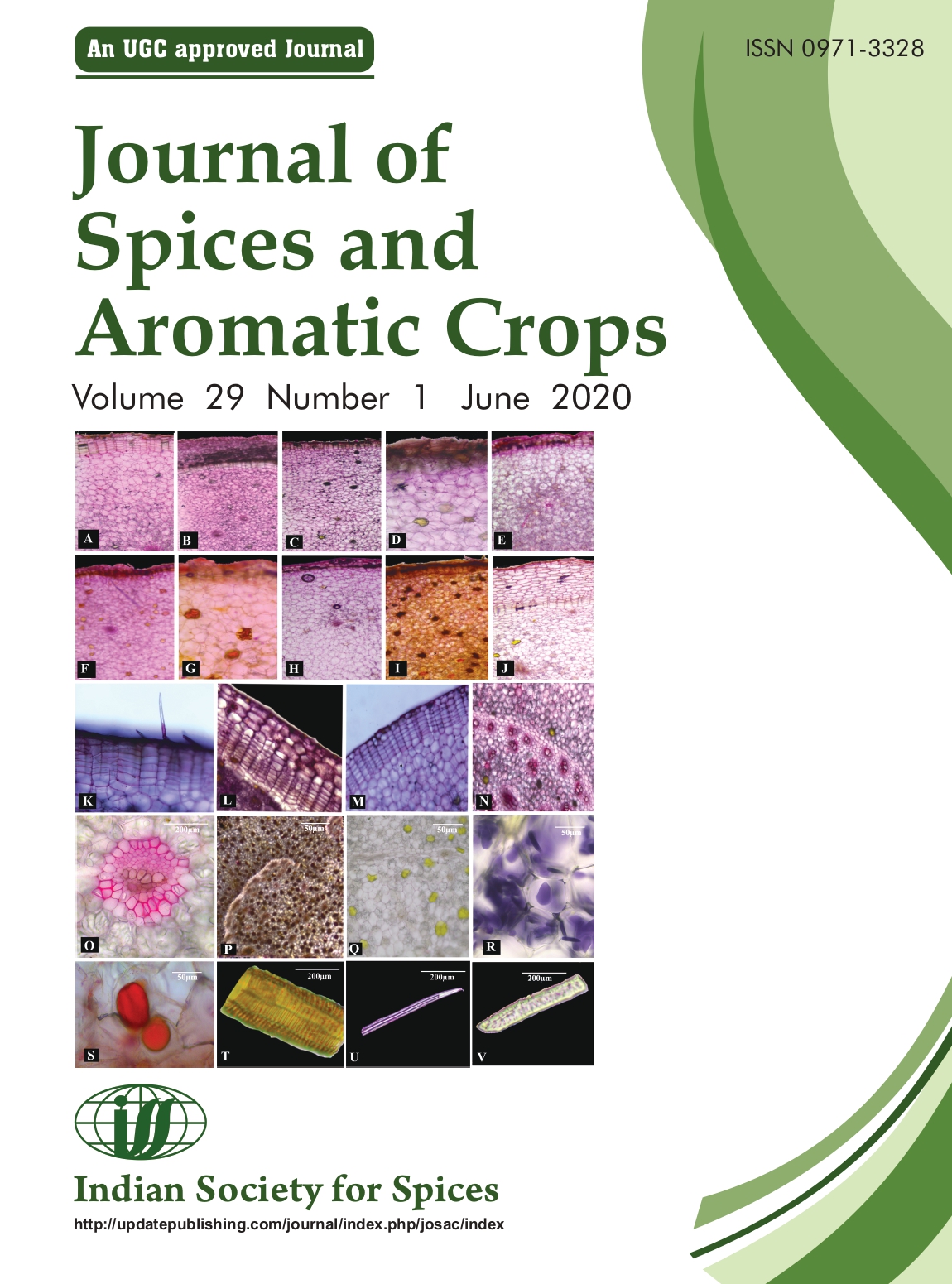Morpho-Anatomical Characterisation of the Rhizomes of Ten Species of Curcuma L. (Zingiberaceae) from south India
DOI:
https://doi.org/10.25081/josac.2020.v29.i1.6243Keywords:
Anatomy, Curcuma, Curcumin cells, Morphology, Oil cells, Starch grains.Abstract
The morphological and anatomical characterisation of ten medicinally and economically important species of Curcuma L. from South India namely, C. aeruginosa (neela-kua), C. amada (manga-inchi), C. aromatica (kasturi-manjal), C. aurantiaca, C. caesia (kari-manjal), C. haritha (karpura-kua), C. longa (manjal), C. montana, C. zanthorrhiza (manja-kua) and C. zedoaria (chenthandan-kua) were studied and compared. Eventhough, all the species show similarity in their characters, striking differences were noticed with respect to morphological characters such as shape and size of mother rhizome and lateral branches, colour of the cut surface, aroma and taste of rhizomes etc. Differences were also observed in some anatomical characters such as nature of endodermoid layer, size and shape of starch grains, oil cells and curcumin cells, etc. Based on the distinct morpho-anatomical features, an artificial dichotomous key was proposed for taxonomic delimitation of the species with their rhizome.






 .
.